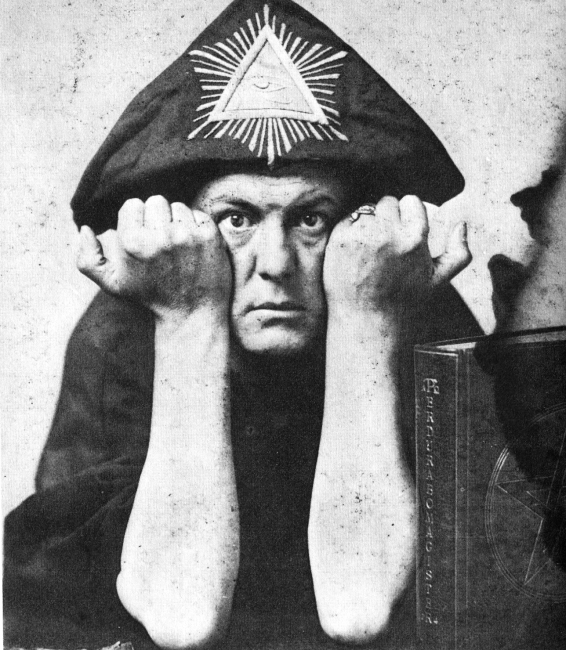Aleister Crowley (1875-1947)
Nowadays is hard to talk about esotericism and religions in New Age without the name of Aleister Crowley who is the most important occultist of the 20th century and as a figure for reference for some contemporary Satanism and indirectly for wiccan since one of the Wicca bases authors, Gerald Gardner, was inspired by him. Because of that here we can have a brief biography.
Edward Alexander Crowley (1875-1947) born in a wealthy family with strong Christian discipline to which he would confront soon enough. He was initiated in the Golden Dawn, a Rosicrucian society which S.L Mathers manage, he was the translator to English of the Grimoir Clavicula Salomonis among other esoteric texts that in addition did Egyptian rituals. One of the favourite professors of Crowley was Alan Bennet, an ascetic, ordained Buddhist monk that showed him magic knowledge. Aleister was a great expert on cartomancy, I Ching, yoga, tantrism, the Cabala and western esotericism in general.
He founded Argentum Astrum order (A.A) in 1905. He gathered the knowledge acquired along other of his own, from his journeys to Egypt and Asia. In El Cairo, a year before, he said he had received a revelation from a spirit called Aiwaz and he wrote a book after that, Liber Vel Legis, the book of Law. In this book, humanity was divided in three eras. The era of Isis was a reference for religious matriarchy, Osiris era for patriarchy and the birth of big religions, and the third one, Horus era, would be a repulsive time against religion, politics and society. Oddly enough the era of Horus would begin with his expulsion from the Golden Dawn in 1907. Crowley however established the bases for the Golden Dawn Thelemita, a different branch of the original G.D.
He was appointed as director of the Ordo Templis Orientis (O.T.O) in 1912, at the beginning it was francmasonic but it was renewed under Thelema law by his leadership: "Do what you want". This freedom principle whose name means "will, volition" itself in Greek, seems to have its origin in a story written by François Rabelais where it was the main rule of a fictional abbey. Crowley was inspired by it and he founded Thelema Abbey on Cefalu, Sicilia in 1920. There were a lot of rituals and Crowley himself made paintings in a mental state of second level, the paintings were photographed by Kenneth Anger.
Nevertheless, although the Thelema principle itself for magical-religious issues aims to search which Crowley called the True Will (to find the way to achieve own desires from psychological and physical point of view), they would remain in concepts and individual interpretations which brought more than one split due to these self-initiations. His eccentric appearances -dress as an Egyptian or Asian, smoking cigars with rum, cloaks and robes) and his sign, the Beast or 666 pretending to be the Devil, won a fame but also mock; and his sexual rituals so violent (some of their participants were hospitalized and one member of the order died during them) caused the abbey to close and his expulsion from Italy in 1923. He was also rejected in France and when he came back to England he lost a lot of his properties when he defended himself in a court in which he was accused of carrying out black masses.
Crowley has more than ten publications that deserve to review once we have in mind all his life path to avoid to judge or misjudge about the magic and himself as a person, we must not forget he received a good education and he started to write when he was 23 years old. This warning is also helpful for his biographers since they can be admirers or detractors so with no impartiality. His tarot, called the Book of Thoth, is one of the most complex and difficult to interpret, since each of the cards, illustrated by Lady Frieda Harris, contains an infinity of symbolisms.
His apprentice, Wilfred Smith, spread in California the Book of Law and he founded the Thelema Church in the United States , however the late leadership of Parsons caused confrontation between the European and American point of view and they went for different paths.
Crowley died of cardiorespiratory problems in 1947 in Hastings, Sussex, at 72 years. There was a lot of speculation about his death, how he died and his last words, trying to dignify or give epicness to someone who was hated and admired. In his funeral there were read paragraphs of their own writing.
Pietro Viktor Carracedo Ahumada - pietrocarracedo@gmail.com
Rachel Black - Translator - raquel_carrasco91@hotmail.com


